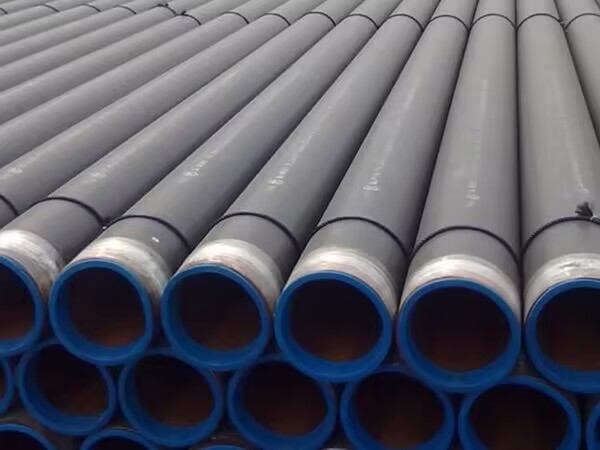3PE/3PP Coating pipes
3PE/3PP coating pipes are mainly used in humid and corrosive environments, such as oil transmission, gas transmission, water treatment and other industrial fields. 3PE and 3PP refer to 3-Layer Polyethylene (3-Layer Polyethylene) and 3-layer Polypropylene (3-layer Polypropylene) coatings, respectively. They have excellent properties such as abrasion resistance and corrosion resistance.

3PE/3PP coating: As the name suggests, it has a three-layer structure, the first layer is an epoxy powder, the second layer is a bonding agent, and the third layer is polyethylene/polypropylene.
The types of 3PE/3PP coated pipes are: SSAW /LSAW/ERW or seamless steel pipes
Coating standard:
ANSI/AWWA C104/A21.4 American National Standard for Cement-Mortar Lining for Ductile-Iron Pipe and Fittings for Water
ISO 21809 Petroleum and natural gas industries -- External coatings for buried or submerged pipelines used in pipeline transportation systems
DIN 30670 Polyethylen coatings of steel pipes and fittings
Size:
Outer Diamter: 219.1mm-4064mm (8" -160 ")
Wall Thickness: 3.2mm - 40mm
Length: 6mtr-18mtr
Production technology:
1. preconditioning: medium frequency heating of the pipe, strict rust removal treatment of the surface of the pipe, usually by sandblasting or shot blasting, to ensure that the surface roughness reaches a certain standard, which can improve the adhesion of the coating and the pipe. The interior of the pipe is then purged and treated with fine dust. Intermediate frequency heating is carried out after treatment.
2. Bottom spraying: The epoxy powder is evenly sprayed to the surface of the heated steel pipe by electrostatic spraying or thermal spraying to form the bottom coating.
3. Intermediate coating: After the epoxy powder coating is cured, a special adhesive is immediately coated. The adhesive layer plays a connecting role and can firmly bind the bottom and outer layer to ensure that the coating will not peel off during use.
4. Outer winding: The outer polyethylene or polypropylene material is coated on the pipe surface by the extruder or winding equipment.
5. Cooling: After the outer coating is completed, the steel pipe will be cooled by air cooling or water cooling system, so that the coating material can be cured quickly to ensure the structure is stable and the surface is smooth.
6. Detection: Polish the port of the cooled steel pipe, and check whether the coating meets the standard.
7. Packaging: The steel pipe that meets the standard will be sprayed for label treatment, and finally packed into the warehouse.
